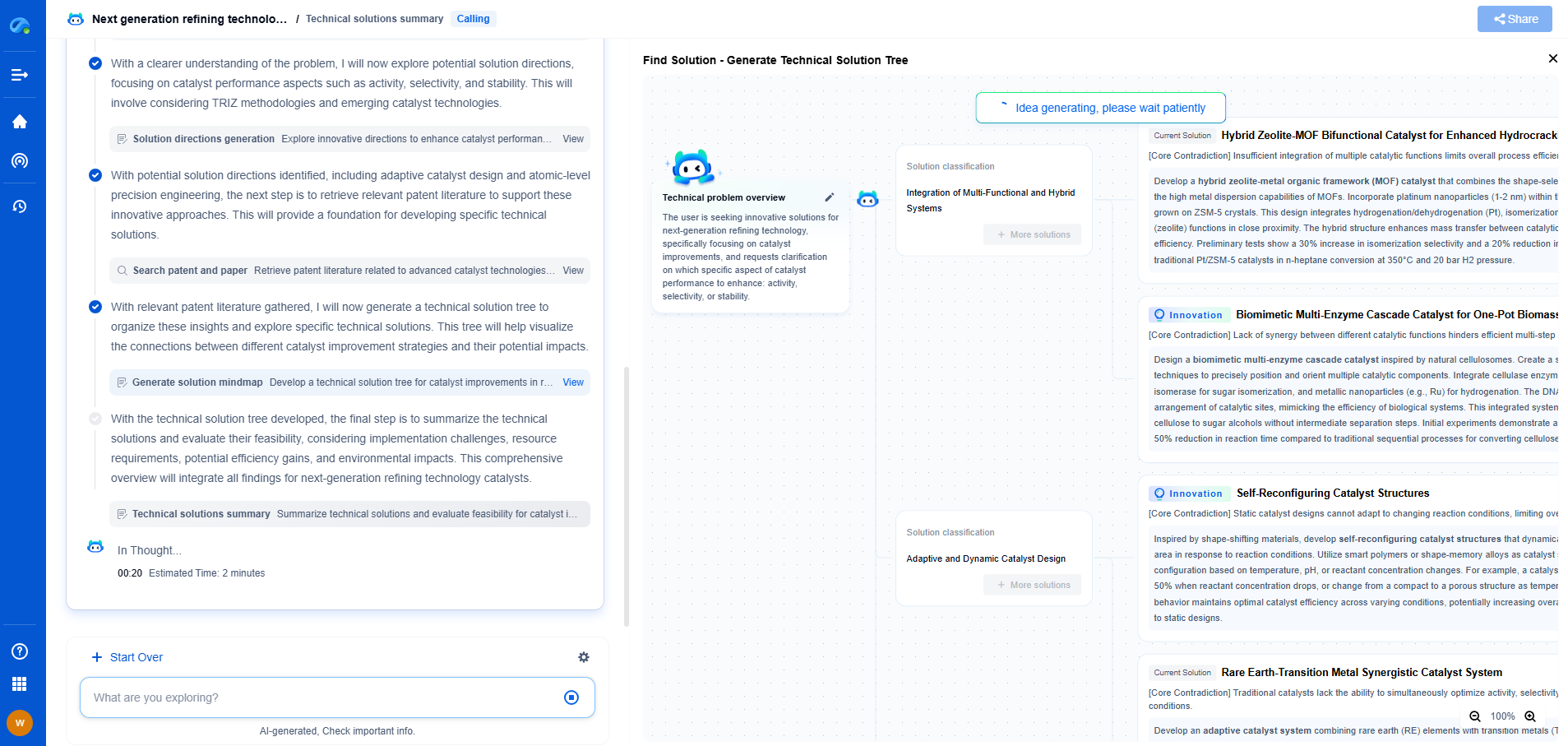Deuterium UV Lamps: Why They Dominate 190-400nm Spectroscopy
JUL 15, 2025 |
Deuterium UV lamps have an indispensable role in the field of spectroscopy, particularly for applications requiring a stable and continuous source of ultraviolet light in the 190-400nm range. These lamps are a popular choice due to their ability to produce a broad and consistent spectrum of UV light, which is crucial for various analytical techniques. This article will explore why deuterium lamps are preferred in this wavelength range, analyzing their characteristics, advantages, and applications.
Characteristics of Deuterium UV Lamps
Deuterium lamps emit light through an electric discharge in deuterium gas, producing a continuous spectrum from the lower edge of the ultraviolet spectrum (around 190nm) up to the visible light region. One of the defining features of deuterium lamps is their ability to emit light with high intensity and stability. This stability is crucial for achieving reliable and reproducible results in spectroscopic measurements.
Another important characteristic of these lamps is their relatively long lifespan compared to other UV light sources. With advancements in lamp technology and materials, modern deuterium lamps can last several thousand hours, reducing the frequency of replacements and maintenance costs.
Advantages Over Other UV Light Sources
Deuterium lamps have several advantages over other UV light sources, such as mercury lamps or xenon arc lamps, particularly within the 190-400nm range. Firstly, the continuous spectrum emitted by deuterium lamps is almost free from line emissions, which is essential for high-resolution spectroscopy. This allows for clearer and more accurate absorption or emission spectra, enhancing the quality of analytical results.
Moreover, deuterium lamps exhibit excellent linearity and minimal drift over time, further contributing to their reliability in quantitative spectroscopic applications. Their superior short-wavelength emission below 250nm is unmatched by many other UV sources, making them the lamp of choice for applications requiring deep UV light.
Applications in Spectroscopy
Deuterium UV lamps are widely used in various spectroscopic techniques, including UV-Visible spectroscopy, high-performance liquid chromatography (HPLC), and environmental monitoring. In UV-Visible spectroscopy, these lamps serve as the primary light source for detecting and analyzing substances based on their absorbance properties. Their ability to provide a stable baseline is key to identifying and quantifying different compounds accurately.
In HPLC, deuterium lamps are often used in detectors to monitor the elution of compounds as they pass through the chromatographic column. Their broad UV range allows for the detection of a wide variety of compounds, making them versatile tools in pharmaceutical and biochemical analyses.
Furthermore, in environmental monitoring, deuterium lamps help detect pollutants and hazardous substances by identifying their specific absorbance characteristics. This application is crucial for ensuring compliance with environmental regulations and maintaining public health and safety.
Conclusion
Deuterium UV lamps continue to dominate the 190-400nm range in spectroscopic applications due to their stability, broad spectrum, and reliability. Their advantages over other UV light sources, combined with their extensive use in various scientific and industrial fields, underscore their importance. As technology advances, deuterium lamps are likely to remain a critical component in spectroscopy, contributing to more efficient and accurate analytical processes.
From interferometers and spectroradiometers to laser displacement sensors and fiber optic probes, the field of optical measurement is evolving at light speed—driven by innovations in photonics, MEMS integration, and AI-enhanced signal processing.
With Patsnap Eureka, biomedical innovators can navigate cross-domain insights in optics, electronics, and biocompatible materials, while discovering IP trends across academic, clinical, and commercial datasets.
💡 Fuel your next breakthrough in optical health tech—start using Patsnap Eureka to unlock deep insights today.
- R&D
- Intellectual Property
- Life Sciences
- Materials
- Tech Scout
- Unparalleled Data Quality
- Higher Quality Content
- 60% Fewer Hallucinations
Browse by: Latest US Patents, China's latest patents, Technical Efficacy Thesaurus, Application Domain, Technology Topic, Popular Technical Reports.
© 2025 PatSnap. All rights reserved.Legal|Privacy policy|Modern Slavery Act Transparency Statement|Sitemap|About US| Contact US: help@patsnap.com

